Occupational Safety Training for Life Jacket Manufacturing
99,000 ₫
Note: The above price is calculated per person and may vary depending on the number of participants in the course and market fluctuations. For more accurate pricing support, please refer to the price list or contact our consulting staff directly.
Occupational safety is an important issue in life jacket manufacturing factories and needs to be addressed promptly to ensure the health and safety of workers and enhance the reputation of businesses. The Occupational Safety Training course is one of the effective solutions to raise awareness of accident prevention for workers involved in life jacket manufacturing.
Table of Contents
Toggle1. Overview of Life Jackets
a. What is a life jacket?
- A life jacket is a type of jacket made from thick, water-resistant material that floats on water, designed to help the wearer stay afloat or remain on the water surface while swimming. Life jackets are used to ensure the safety of users during water sports activities such as swimming, rowing, surfing, ferry rides, fishing, and other water activities.
- Life jackets can be made from various materials such as foam, rubber, nylon, or other lightweight materials arranged to retain enough air for the wearer to swim and maintain balance on water.
- The life jacket manufacturing industry in Vietnam is currently developing, with many companies operating in this field. According to statistics from the General Department of Vietnam Customs, in 2021, Vietnam’s life jacket export turnover reached approximately 400 million USD, an increase of 8.7% compared to 2020.
- Many life jacket manufacturers in Vietnam have invested in production technology and equipment to improve product quality and reduce production costs.

b. Life jacket manufacturing machinery
The machinery used in life jacket manufacturing includes:
- Automatic cutting machines: used to cut fabric pieces of uniform size for life jacket patterns.
- Single-needle sewing machines: used to sew fabric pieces together to form components of the life jacket.
- Double-needle sewing machines: capable of sewing both sides of the fabric simultaneously, increasing durability and water resistance of the life jacket.
- Heat welding machines: used to bond fabric pieces using high temperature.
- Heat pressing machines: used to press foam or plastic into the fabric, providing thickness and rigidity to the life jacket.
- Button sewing machines: used to stitch decorative details and buttons on the life jacket.
- Printing machines: used to print images, logos, or other information on the life jacket.
Depending on production needs and technology, life jacket manufacturers may use one or multiple types of machinery to produce life jackets.

c. Prominent life jacket manufacturers
Some notable life jacket manufacturers in Vietnam include:
- Viet Tien Garment Joint Stock Corporation: a leading manufacturer in Vietnam with many years of experience, supplying products for renowned global brands such as The North Face, Patagonia, and Columbia.
- TNG Investment and Trading Joint Stock Company: one of the top life jacket manufacturers in Vietnam, with a modern and synchronized production system meeting quality and quantity requirements of customers.
- Tae Kwang Vina Industrial Joint Stock Company: a 100% foreign-invested company headquartered in South Korea with a branch in Vietnam, specializing in personal protective equipment such as life jackets, footwear, and gloves.
- Vinatex Long An Joint Stock Company: a member of Vietnam National Textile and Garment Group (Vinatex), specializing in personal protective products such as life jackets, raincoats, footwear, and gloves. The company is ISO 9001 and ISO 14001 certified.
- Duy Tan Plastics Manufacturing Corporation: specializes in plastic products, including life jackets, with headquarters in Hanoi and manufacturing plants in Thanh Hoa and Quang Ninh.
d. Specific jobs in a life jacket manufacturing factory
Group 1
- Executive director, deputy executive director, department heads in a life jacket manufacturing factory.
Group 2
- Safety officer: manages factory safety, designs safety procedures, supervises, and ensures employees follow safe working practices.
Group 3
- Material selection: The factory must select appropriate fabrics, padding, accessories, and waterproof materials to manufacture life jackets, ensuring quality standards and proper water and thermal resistance.
- Fabric cutting: Fabrics are cut to required sizes and shapes to form life jacket components.
- Sewing life jackets: Components are sewn together to create the life jacket, including pockets, linings, trims, zippers, color coordination, inserting thermal pads, and stitching accessories.
- Adjustment and repair: Life jackets are inspected to ensure accuracy and quality. Any defects are corrected before leaving the factory.
- Packing and transportation: Finished life jackets are packed in protective bags or boxes for delivery to dealers or final customers.
Group 4
- Office, service, sales, and marketing jobs.
- Production management, quality management, human resource management, materials management, finance and accounting management.
- Research and development of new products, packaging design.

2. Overview of Occupational Safety Training for Life Jacket Manufacturing
This article focuses on Group 3 because Group 3 is directly involved in the manufacturing process and bears the highest occupational safety risks. For reference on other groups, see here.
a. What is Group 3 occupational safety training?
- Group 3 occupational safety training provides awareness and skills to prevent workplace accidents for employees.
- The training helps employees identify and avoid hazards, reducing risks of accidents while working.
REGISTER FOR OCCUPATIONAL SAFETY TRAINING SERVICE
b. Training duration
Initial safety training
- Total training time is at least 24 hours, including assessment.
- 8 hours theory on occupational safety and hygiene policies and laws
- 8 hours theory on basic occupational safety and hygiene knowledge
- 4 hours theory on specialized training content
- 2 hours practical training on specialized content
- 2 hours final theoretical assessment
The training center may divide the course into multiple sessions depending on workers’ schedules, typically 6 sessions over 3 days if the company allows continuous training.
Periodic safety training
- Before the occupational safety card expires, employees must undergo periodic safety training with training time at least 50% of the initial training duration.
Explanation: The total duration of periodic occupational safety training is at least 12 hours, including assessment. After completing the periodic training and passing the test, employees will be reissued or have their safety card extended.
c. Training content
| No. | TRAINING CONTENT | TRAINING DURATION (HOURS) | |||
| Total | Including | ||||
| Theory | Practical | Assessment | |||
| I | Occupational safety and hygiene policies and laws | 8 | 8 | 0 | 0 |
| 1 | Overview of legal documents on occupational safety and hygiene. | 6 | 6 | ||
| 2 | Standards and technical regulations on occupational safety and hygiene. | 1 | 1 | ||
| 3 | Specific regulations of state management agencies on occupational safety and hygiene when constructing, expanding, or renovating production facilities, and on using, preserving, storing, and inspecting machinery, equipment, materials, and substances with strict safety requirements. | 1 | 1 | ||
| II | Basic occupational safety and hygiene knowledge | 8 | 8 | 0 | 0 |
| 1 | Basic knowledge of hazards and harmful factors at the workplace. | 4 | 4 | ||
| 2 | Methods to improve working conditions. | 1 | 1 | ||
| 3 | Safety culture in production and business. | 1 | 1 | ||
| 4 | Rights and obligations of employers and employees; occupational safety and hygiene policies for employees; functions and duties of safety and hygiene staff. | 1 | 1 | ||
| 5 | Safety rules, signs, safety equipment, personal protective equipment, first aid skills, and occupational disease prevention. | 1 | 1 | ||
| III | Specialized training content | 6 | 4 | 2 | 0 |
| Comprehensive knowledge of machines, equipment, hazardous substances; risk analysis, evaluation, and management for occupational safety; safe working procedures with machinery, equipment, and hazardous substances. | 6 | 4 | 2 | ||
| IV | Final training assessment | 2 | 2 | 0 | 0 |
| Total | 24 | 22 | 2 | ||
See more training content of the 6 groups.
d. Occupational safety card
After completing the occupational safety training and passing the assessment, employees will be issued a Group 3 occupational safety card (commonly called Group 3 safety certificate).
The Group 3 safety card displays information such as full name, date of birth, specific job and working environment, training duration, official seal, and signature confirming course completion.
According to regulations specified in Clause 2 of Article 24 of Decree 44/2016/ND-CP, there are two cases:
- If the employer and employee have a labor contract, the employer must sign, stamp, and validate the safety card for the Group 3 employee after completing the training and passing the assessment.
- If the employee is freelance or temporary without a labor contract, the training unit must sign, stamp, and validate the safety card after the employee completes the training and passes the assessment.

3. Identifying Hazards in Life Jacket Manufacturing
During the life jacket manufacturing process, there are several hazards that employees working in life jacket factories need to recognize and prevent:
- During manufacturing, chemicals such as ice water, detergents, hardeners, dyes, oils, and greases are used to process fabric, create colors, and enhance the durability and aesthetics of products. However, they can harm workers’ health if not used correctly or without proper protection.
- Materials such as foam, felt, and nylon fabric are used to make the core of life jackets, which can pose risks to workers if not handled and used correctly.
- Machines and equipment used in life jacket manufacturing can cause accidents if not operated properly or maintained regularly.
- High temperatures, humidity, and pollution can affect workers’ health during life jacket manufacturing.
- Employees may get injured if personal protective equipment (PPE) is not used, including safety glasses, gloves, waterproof jackets, and life jackets.
4. Common Work Accidents in Life Jacket Manufacturing
Common work accidents in life jacket manufacturing include:
- Fire and explosion: This is a major risk in life jacket factories. The chemicals used in manufacturing are highly flammable, and lapses in production processes or quality management can lead to fire and explosion accidents.
- Chemical poisoning: Chemicals used in life jacket manufacturing, such as polyurethane, are toxic and can harm health if not handled properly. Direct exposure can cause respiratory and skin issues, and ingestion or inhalation can lead to poisoning.
- Physical injuries: Equipment and machines used in the manufacturing process can cause hand, leg, or eye injuries due to dust or liquids.
- Other workplace accidents: Other accidents may include falls from height, getting caught in machines, or being trapped in equipment or materials.

5. Safety Measures in Life Jacket Manufacturing
Safety measures in life jacket manufacturing include:
- Ensure employee safety during production, maintenance, and repair of machinery through training, guidance, and provision of full personal protective equipment.
- Enhance inspection and maintenance of machinery to ensure proper functioning and reduce accident risks.
- Perform regular cleaning and maintenance of manufacturing equipment to ensure stability and safety.
- Ensure workplace hygiene, especially in areas handling chemicals and raw materials.
- Conduct regular quality inspections for raw materials and products to minimize production incidents.
- Have fire prevention plans and rescue equipment ready 24/7 for emergencies.
- Organize regular occupational safety training sessions for employees to improve awareness and skills.
- Manage and monitor suppliers of raw materials, accessories, machinery, and production partners to ensure quality, safety, and timeliness.
- Periodically conduct workplace environmental monitoring in factories, collecting and analyzing harmful factors to adjust and reduce risks, preventing occupational diseases for employees.
6. Benefits of Occupational Safety Training in Life Jacket Manufacturing
An Toan Nam Viet provides the following benefits to businesses after completing occupational safety training courses in accordance with Decree 44/2016/ND-CP on Occupational Safety and Health:
- Workers can recognize potential hazards and take preventive measures to avoid accidents.
- Businesses can establish risk prevention measures in production, operation, and maintenance processes.
- Minimize costs associated with workplace safety incidents.
- Continuous production increases labor productivity and product quality.
- Comply with occupational safety laws and reduce legal risks.
- Enhance credibility and professionalism, boosting the company’s brand reputation.
An Toan Nam Viet training courses are designed to prevent external hazards affecting individuals, helping them avoid injuries or, in severe cases, fatalities.
REGISTER FOR OCCUPATIONAL SAFETY TRAINING SERVICES
7. Customer Feedback after Completing Life Jacket Safety Training
An Toan Nam Viet has years of experience accompanying businesses across Vietnam, particularly in the southern provinces. This responsibility is highly valued, and therefore our occupational safety training is increasingly professional. The motivation behind An Toan Nam Viet’s growth comes from positive feedback and suggestions from clients. Below are feedback examples from partners we have served.
See more customer interviews after using An Toan Nam Viet services
8. An Toan Nam Viet’s Occupational Safety Training Capability
An Toan Nam Viet is a reputable and quality occupational safety training center in Vietnam, conducting continuous training at factories, manufacturing facilities, or construction sites nationwide (all 63 provinces).
REGISTER FOR OCCUPATIONAL SAFETY TRAINING SERVICES
Occupational Safety Training License
- An Toan Nam Viet has been inspected and certified by the Department of Labor Safety under the Ministry of Labor, War Invalids, and Social Affairs, confirming eligibility for occupational safety and hygiene training. This reinforces our training capacity.

Training Materials and Lectures
- Before being included in occupational safety training courses, materials are reviewed to ensure accuracy and effectiveness.
- Teaching methods follow An Toan Nam Viet standards, developed by experts in occupational safety to maximize knowledge retention for trainees.
Facilities
- Controlling classroom factors enhances teaching efficiency and knowledge retention.
- Our training facilities provide spacious classrooms meeting standards for size, lighting, and training equipment.
9. Nationwide Reputable Occupational Safety Training Center
At An Toan Nam Viet, we prioritize professional occupational safety training. Our goal is to teach workers to protect themselves, contributing to national development.
We carefully prepare every detail to ensure training effectiveness, from tools, equipment, curriculum, materials, audio, to lighting.
Our trainers are experts with years of experience, including research on hazard identification across industries and prevention methods.
Lectures are practical, engaging, and easy to understand, ensuring comfortable learning and knowledge retention. All content strictly follows Decree 44/2016/ND-CP.
Participants learn hazard prevention measures and how to protect themselves, applying these skills effectively in real work situations.
Our safety training center is proud to provide professional and reputable occupational safety services with advantages:
- Competitive training costs while maintaining quality.
- Flexible scheduling to suit company production.
- Quick and lawful certification procedures.
- Experienced trainers.
- Classrooms controlled to enhance teaching and learning efficiency.
- Lectures adapted to company occupational safety needs.
- An Toan Nam Viet works diligently to provide accurate and fast support to clients.

10. Additional Life Jacket Safety Training Materials
- Life Jacket Manufacturing Safety Materials
- Occupational Safety Training Materials
- Occupational Safety Test Materials
- Life Jacket Manufacturing Safety Quiz
- Life Jacket Manufacturing Safety Training Slides
1 review for Occupational Safety Training for Life Jacket Manufacturing
No comments yet

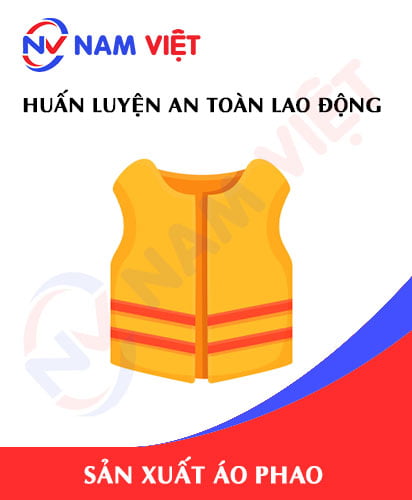
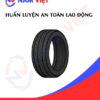
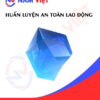



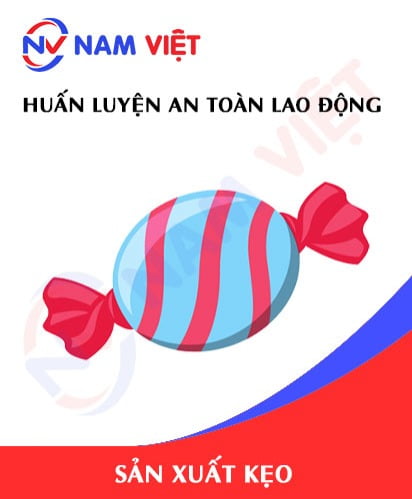


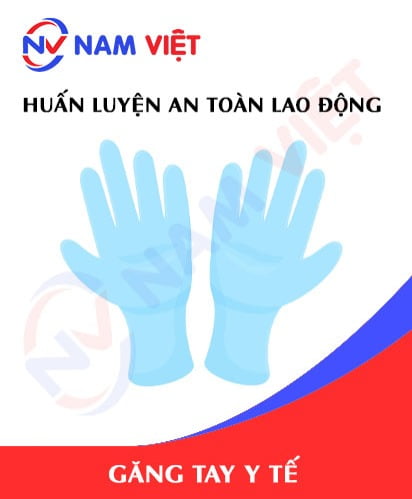




namchinh.haiphong341
Rất tốt! tôi tin tưởng trung tâm